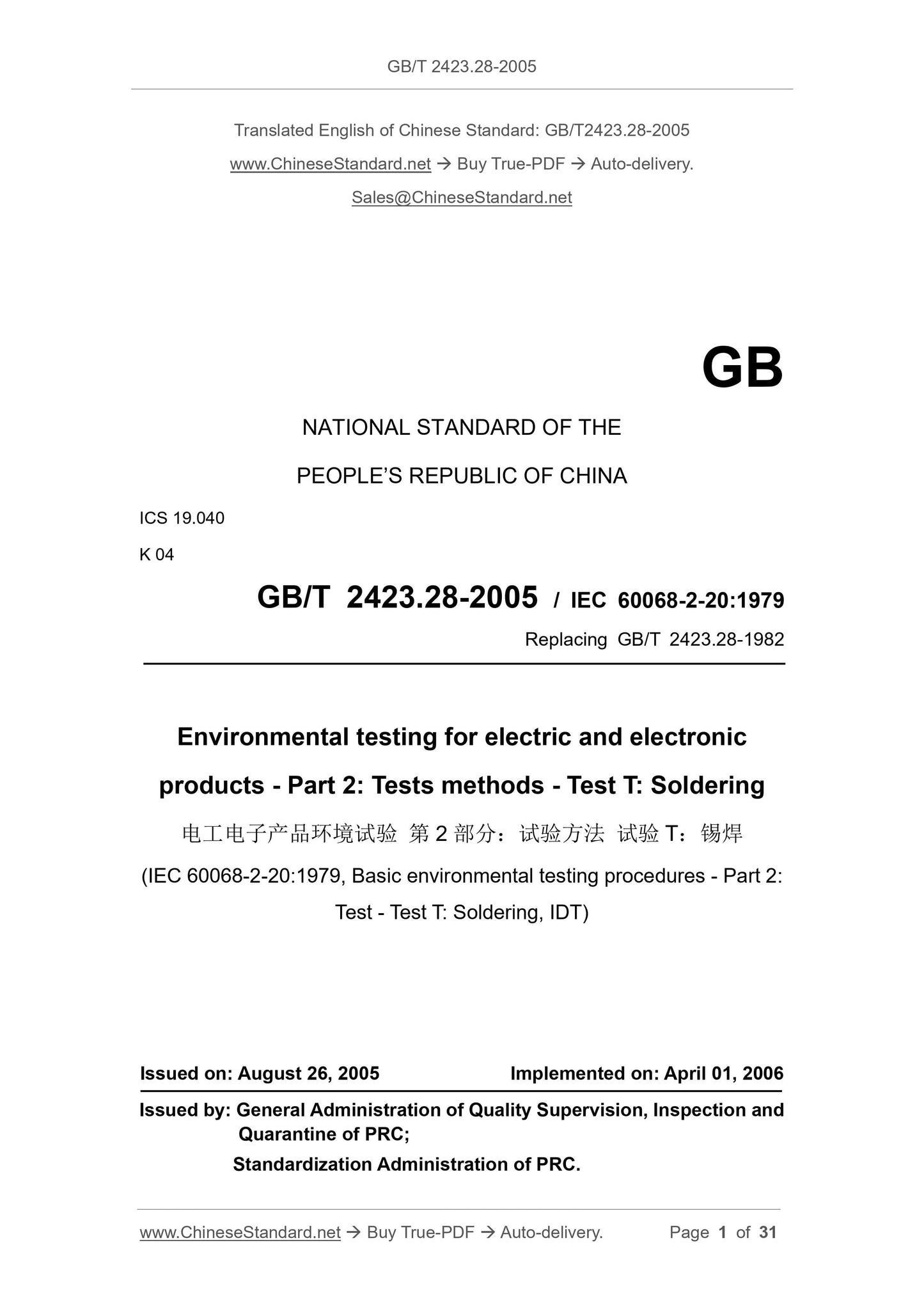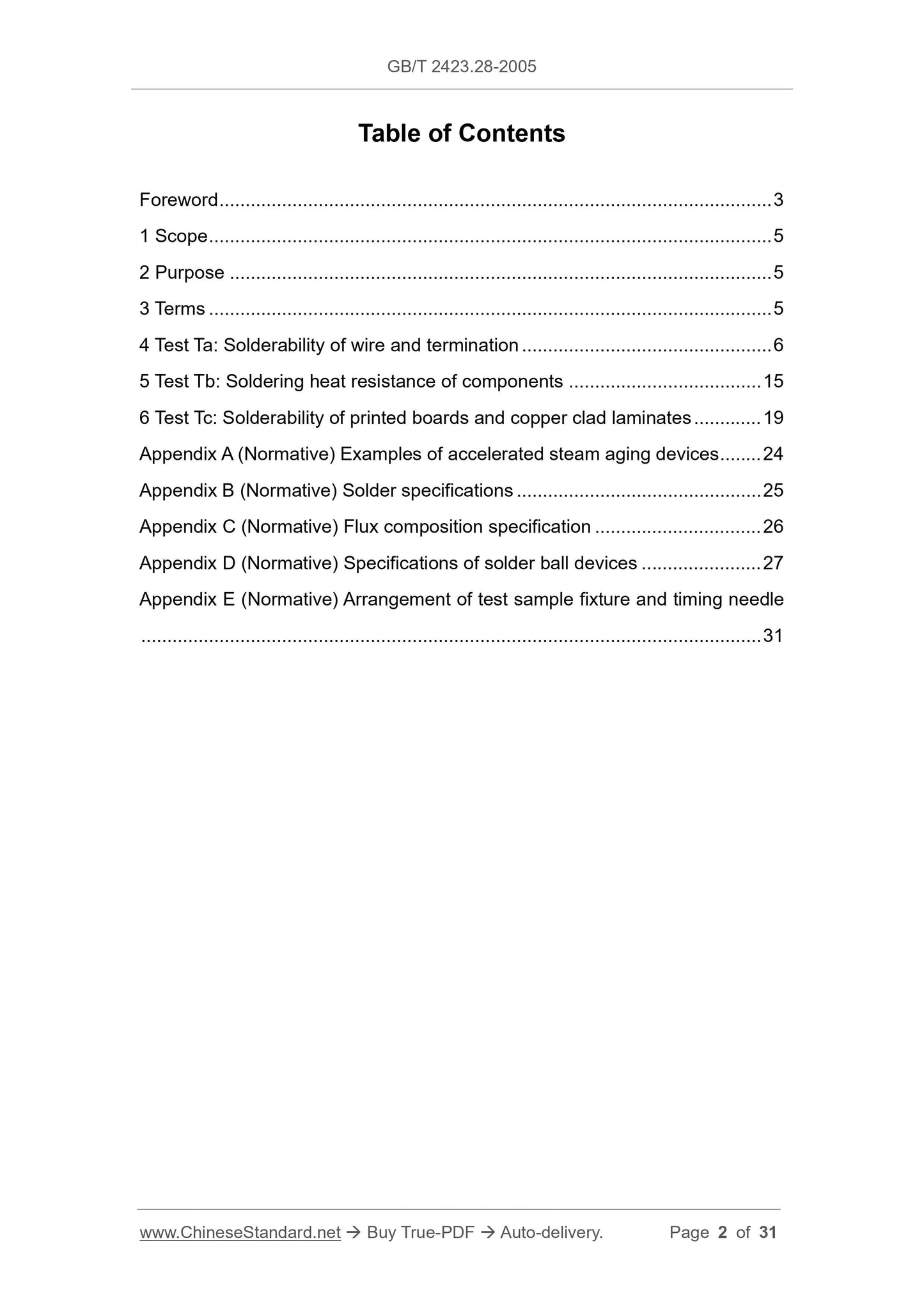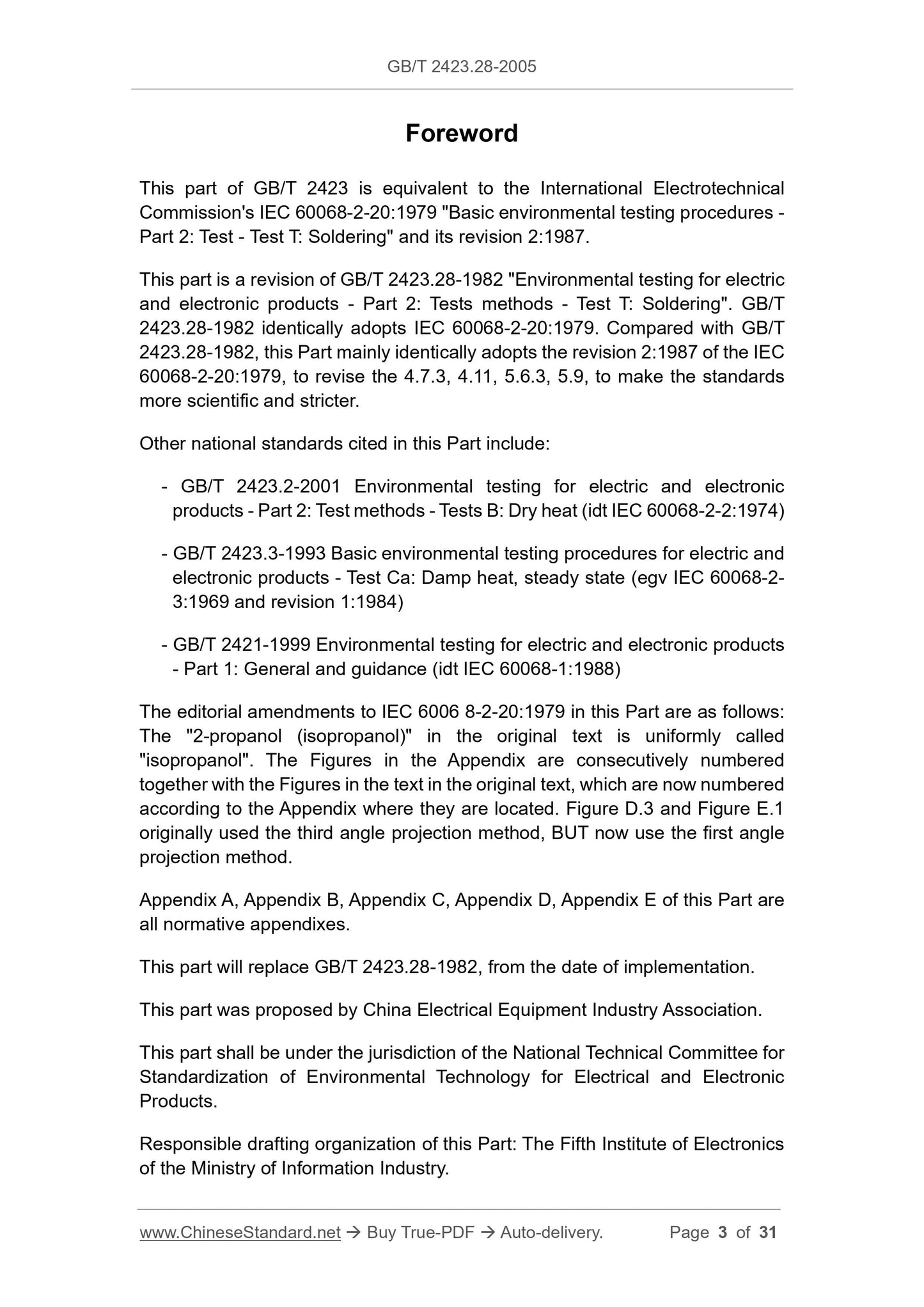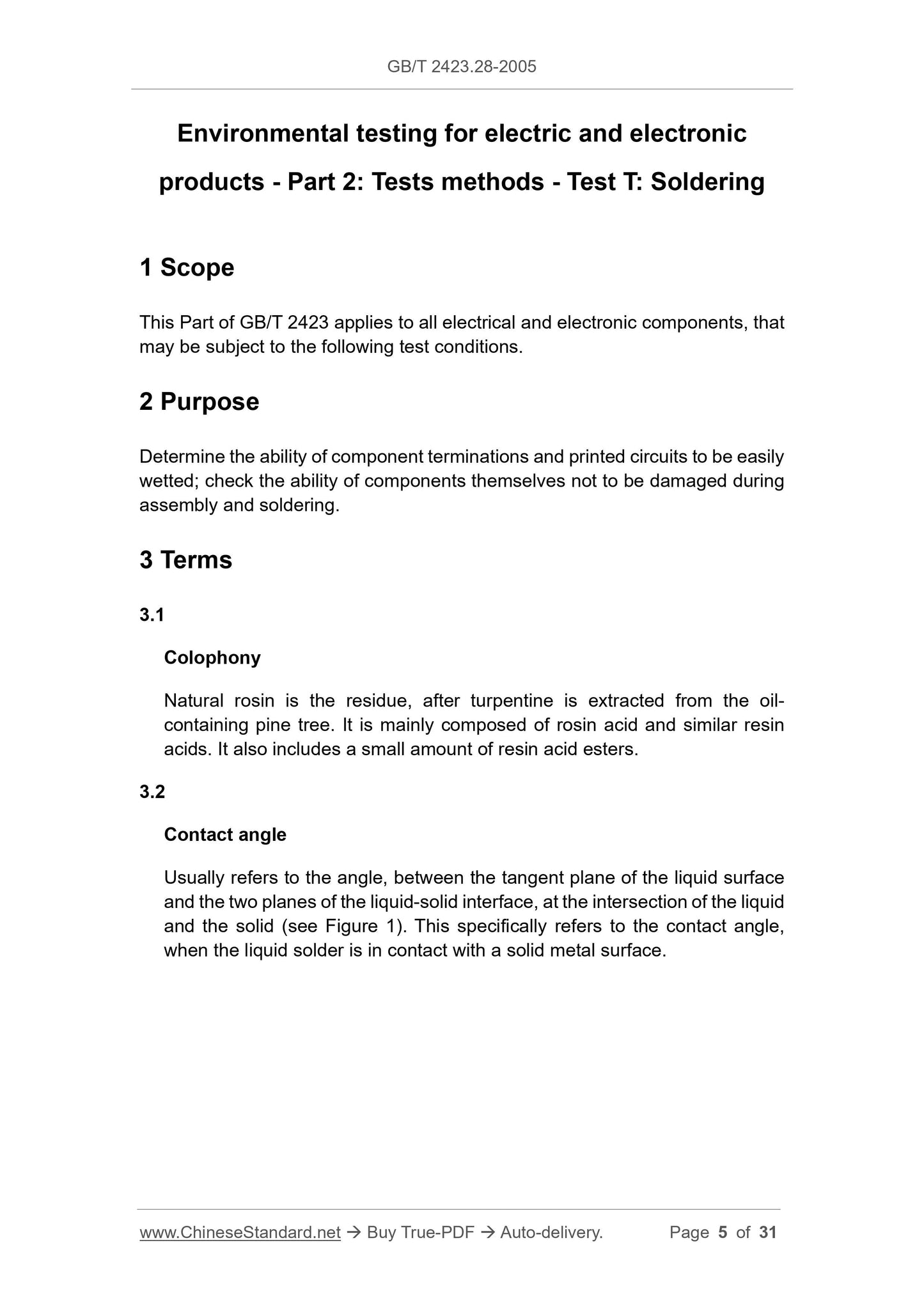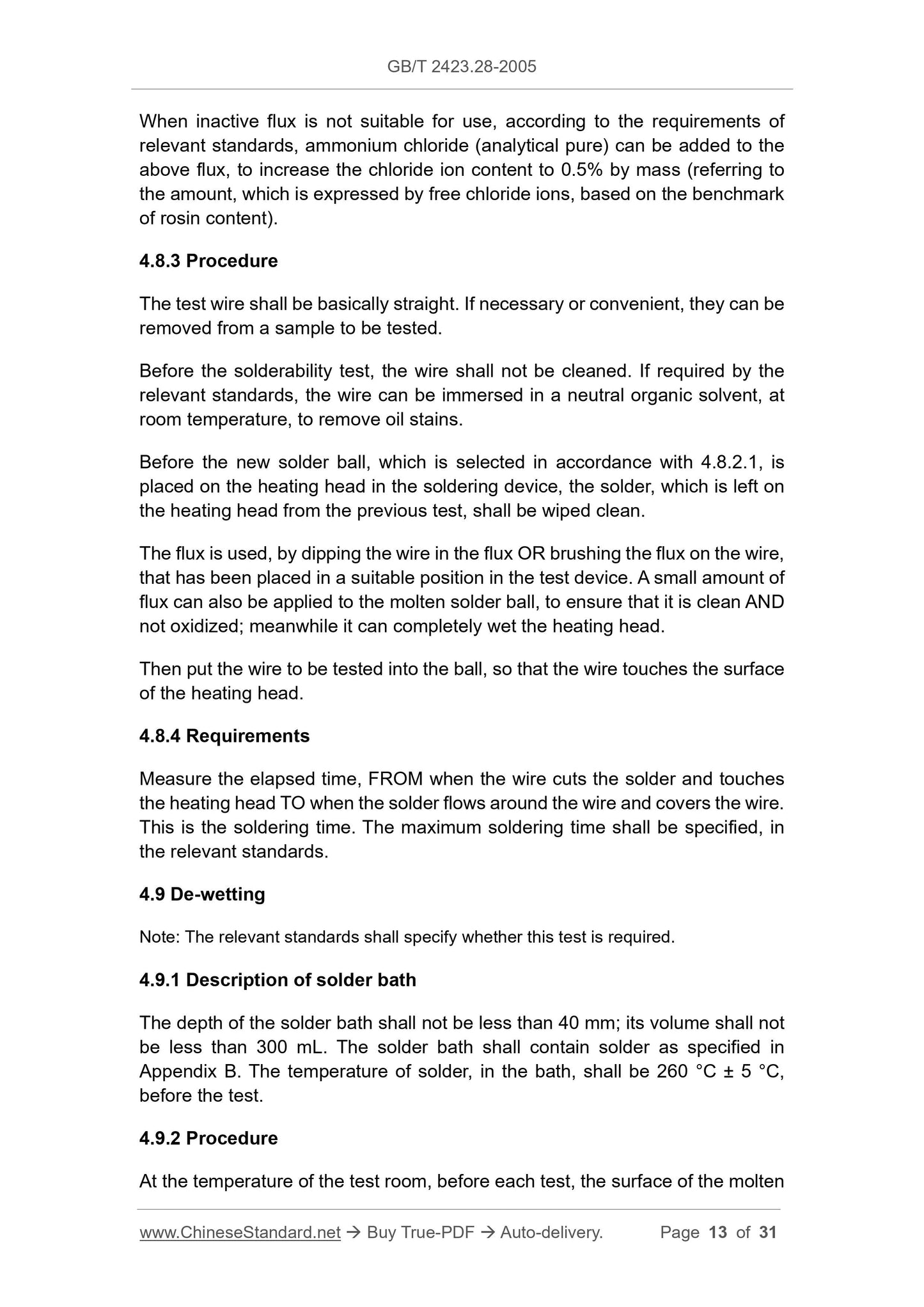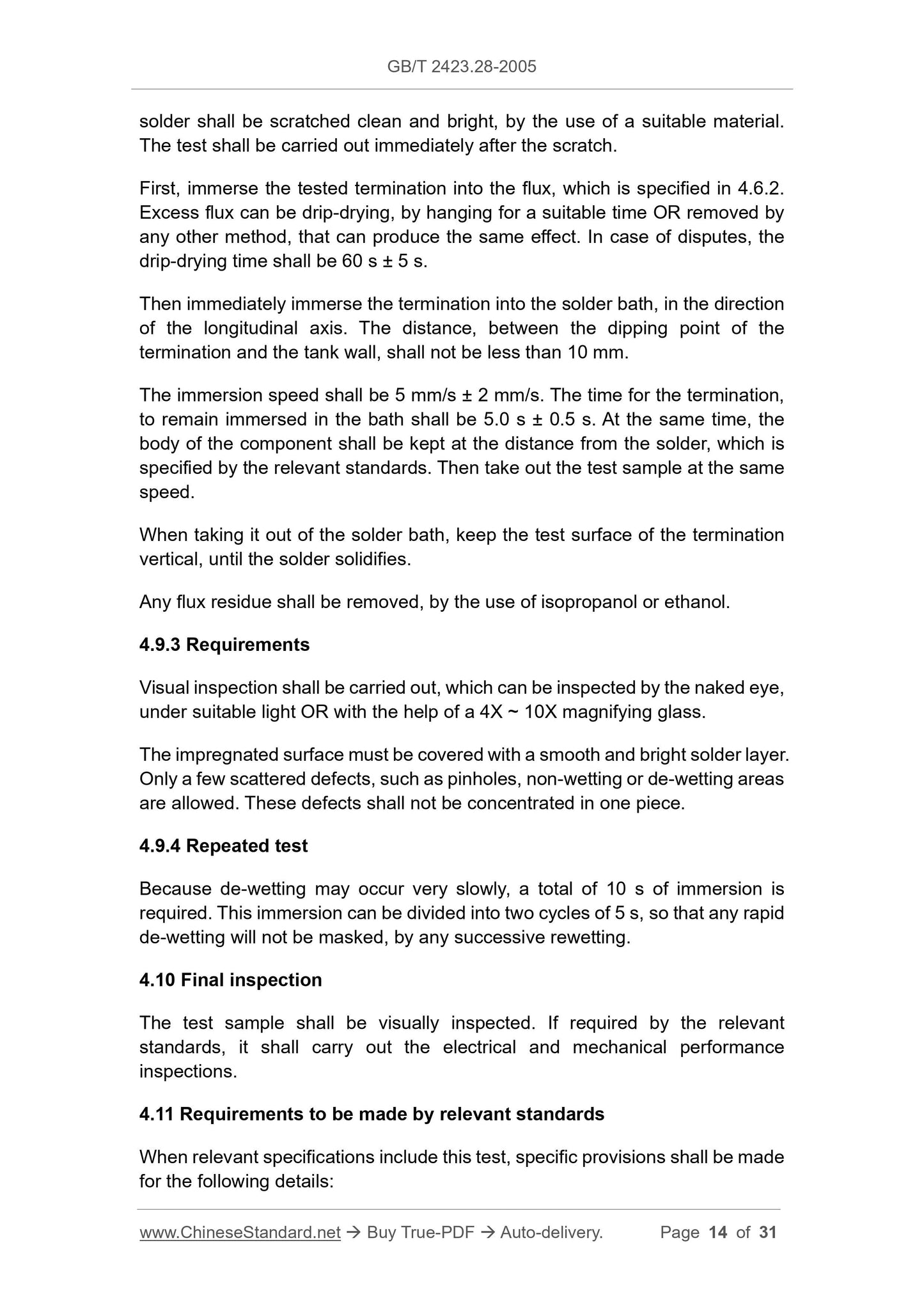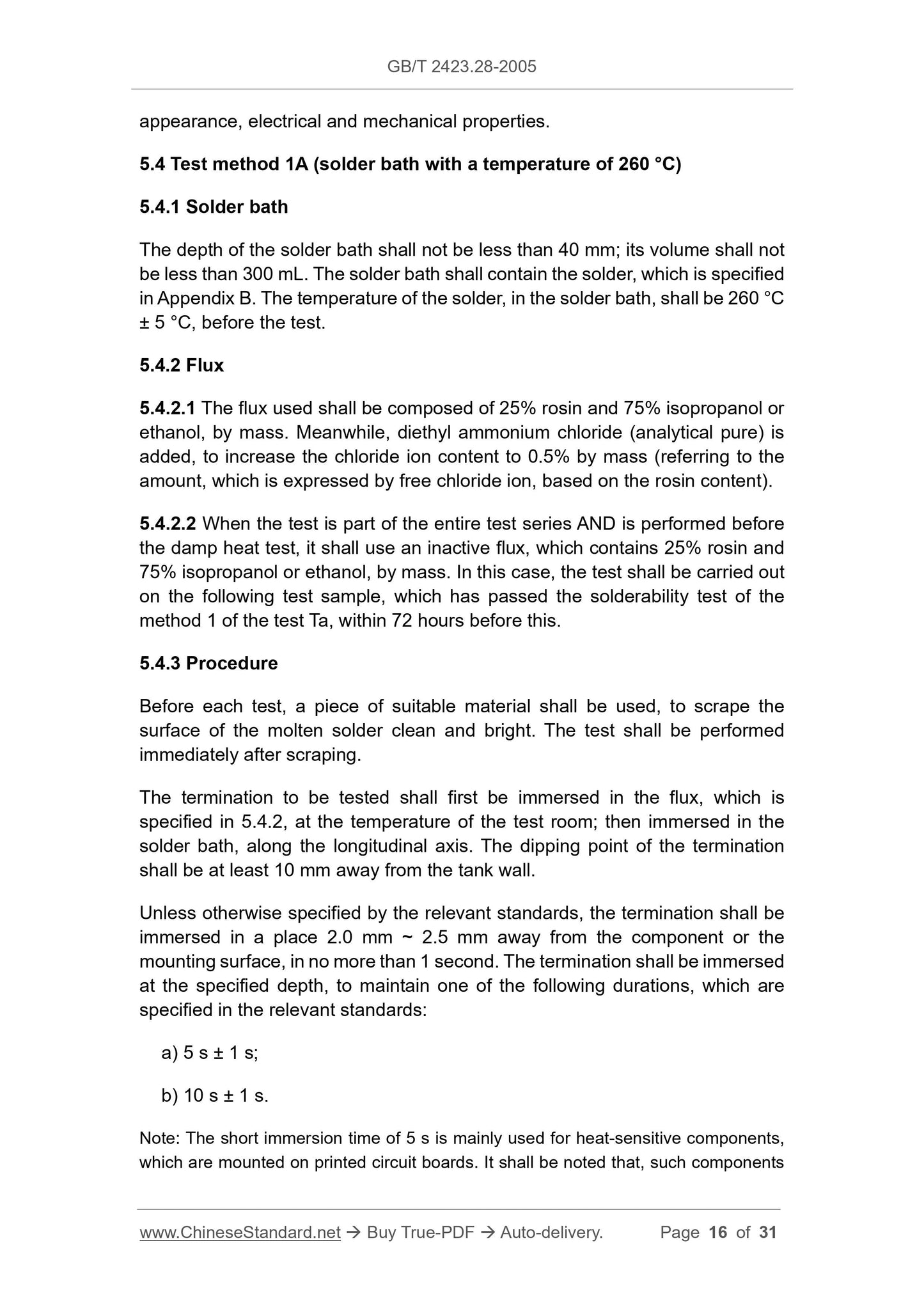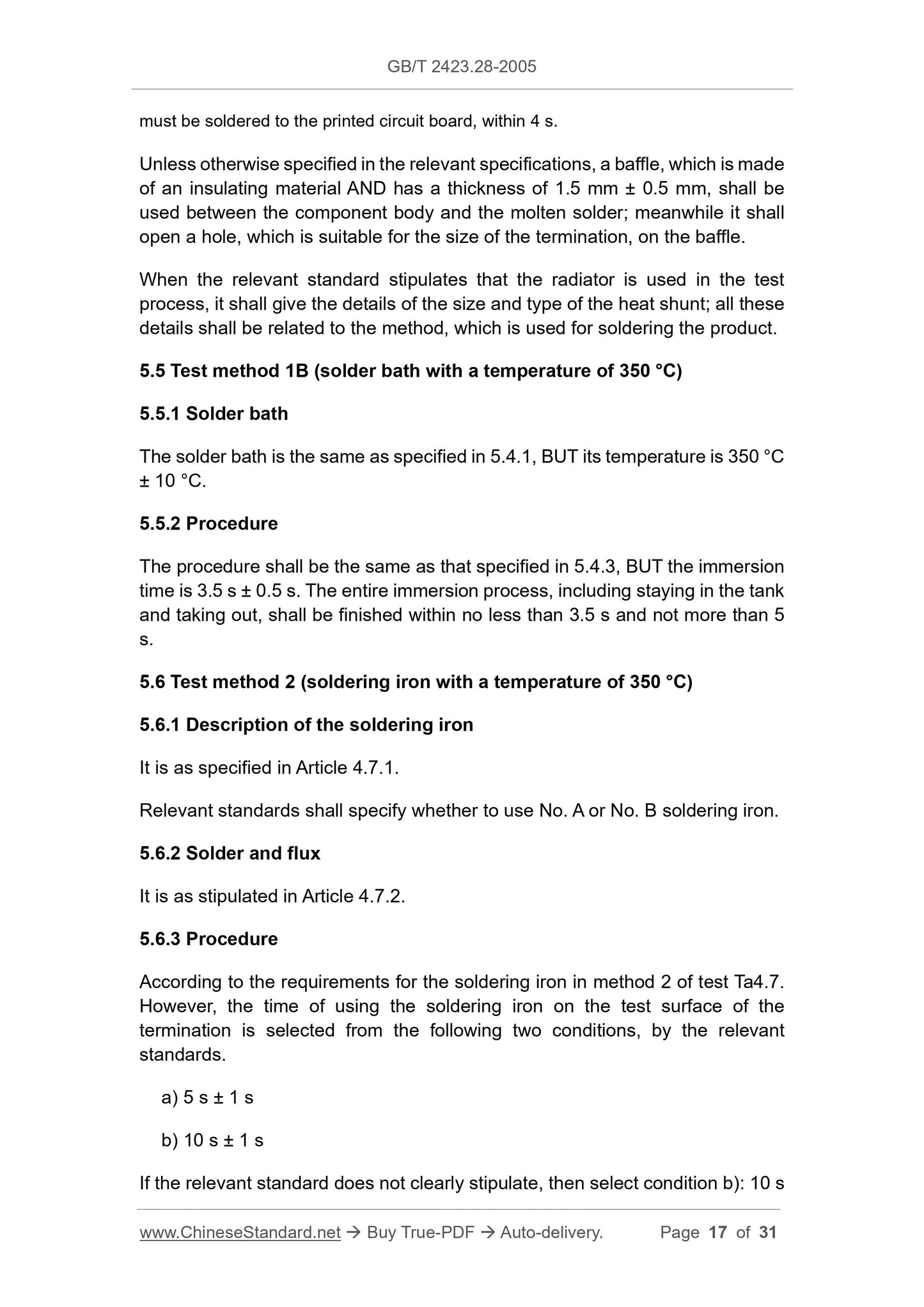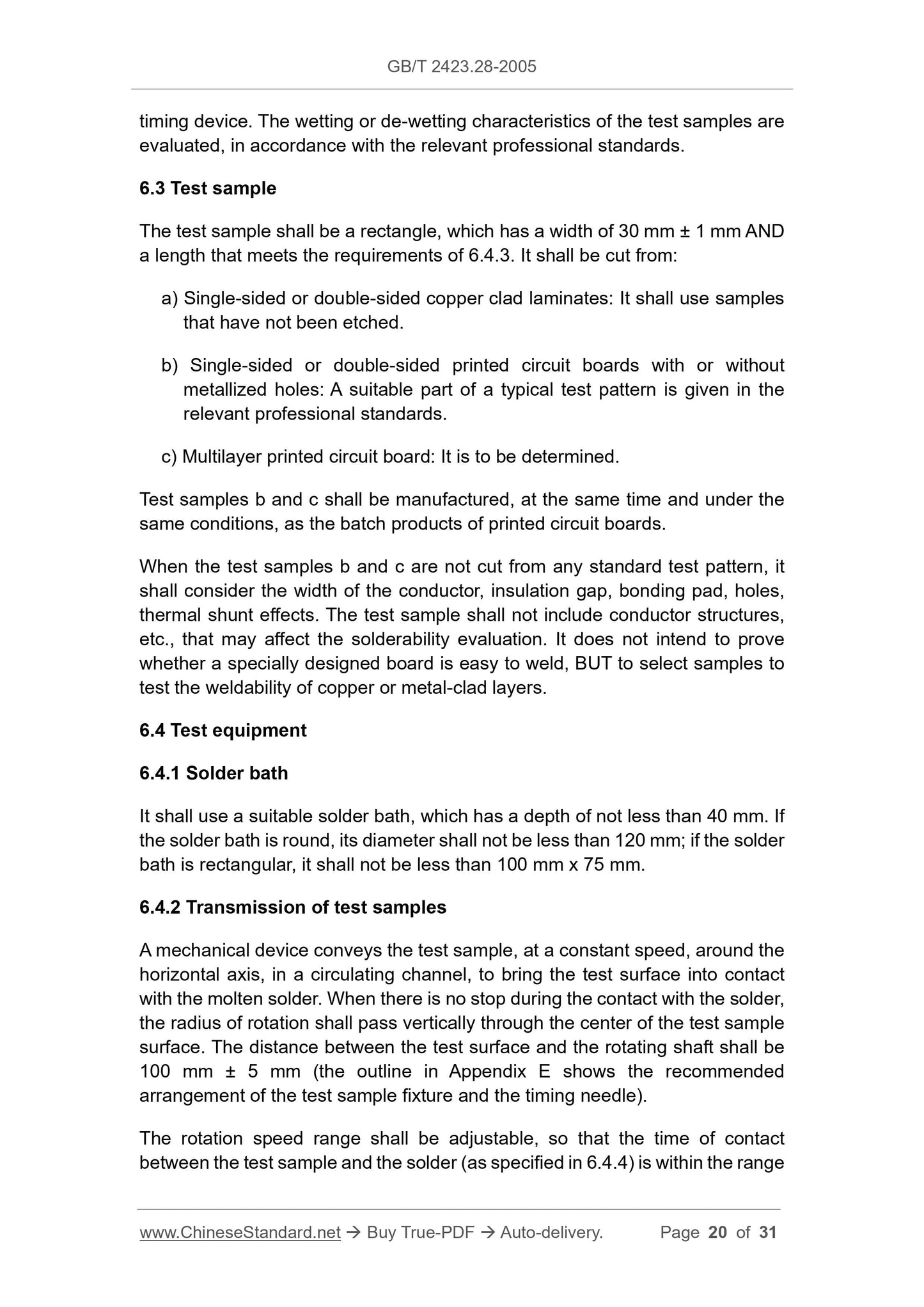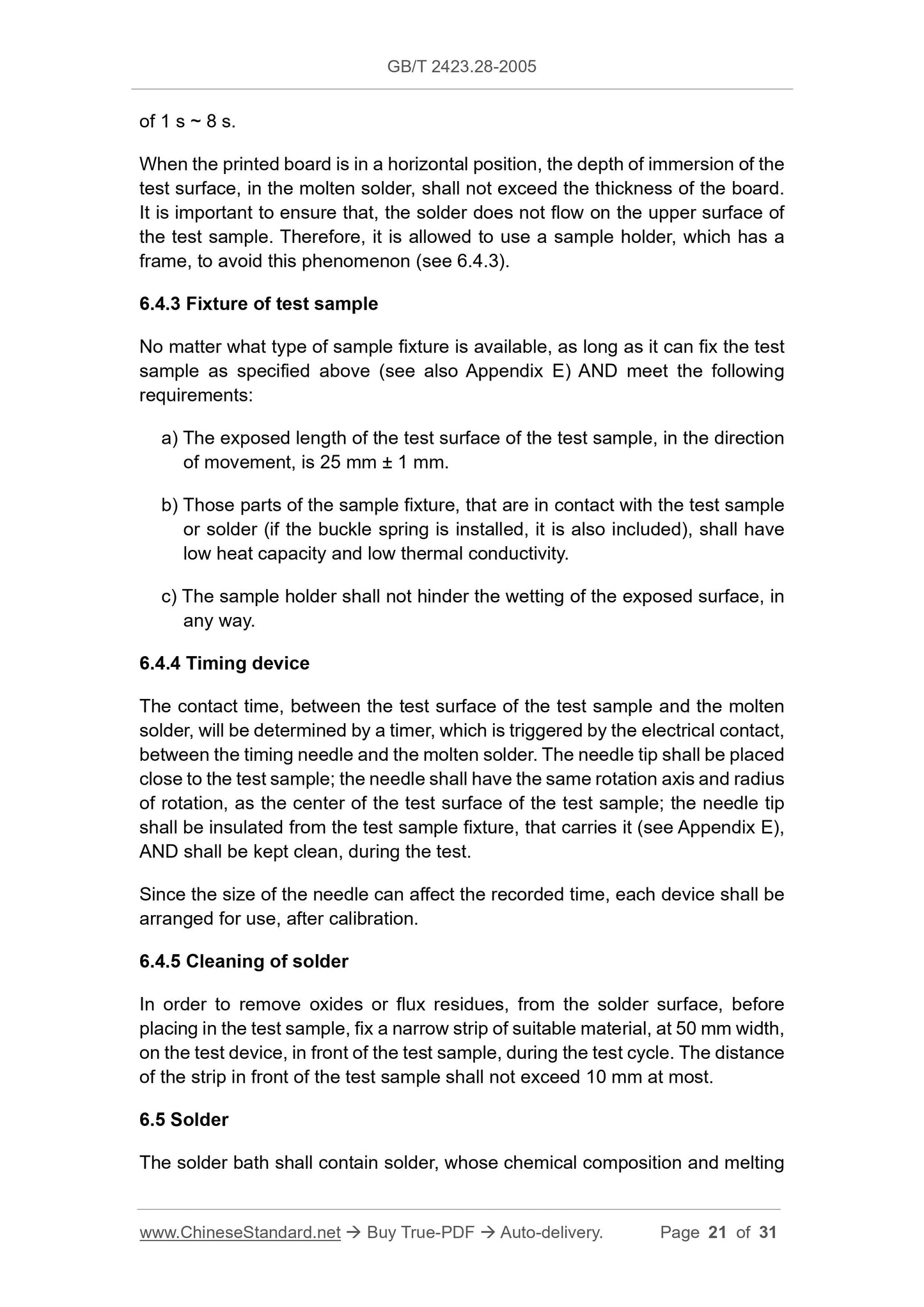1
/
of
10
www.ChineseStandard.us -- Field Test Asia Pte. Ltd.
GB/T 2423.28-2005 English PDF (GB/T2423.28-2005)
GB/T 2423.28-2005 English PDF (GB/T2423.28-2005)
Regular price
$220.00
Regular price
Sale price
$220.00
Unit price
/
per
Shipping calculated at checkout.
Couldn't load pickup availability
GB/T 2423.28-2005: Environmental testing for electric and electronic products - Part 2: Test methods - Test T: Soldering
Delivery: 9 seconds. Download (and Email) true-PDF + Invoice.Get Quotation: Click GB/T 2423.28-2005 (Self-service in 1-minute)
Newer / historical versions: GB/T 2423.28-2005
Preview True-PDF
Scope
This Part of GB/T 2423 applies to all electrical and electronic components, thatmay be subject to the following test conditions.
Basic Data
| Standard ID | GB/T 2423.28-2005 (GB/T2423.28-2005) |
| Description (Translated English) | Environmental testing for electric and electronic products. Part 2: Test methods. Test T: Soldering |
| Sector / Industry | National Standard (Recommended) |
| Classification of Chinese Standard | K04 |
| Classification of International Standard | 19.040 |
| Word Count Estimation | 22,215 |
| Date of Issue | 2005-08-26 |
| Date of Implementation | 2006-04-01 |
| Older Standard (superseded by this standard) | GB/T 2423.28-1982 |
| Adopted Standard | IEC 60068-2-20-1979, IDT |
| Regulation (derived from) | Announcement of Newly Approved National Standards No. 11 of 2005 (No. 85 overall) |
| Issuing agency(ies) | General Administration of Quality Supervision, Inspection and Quarantine of the People Republic of China, China National Standardization Administration Committee |
| Summary | This standard applies to the following test conditions may be subject to all electrical and electronic devices. |
Share
